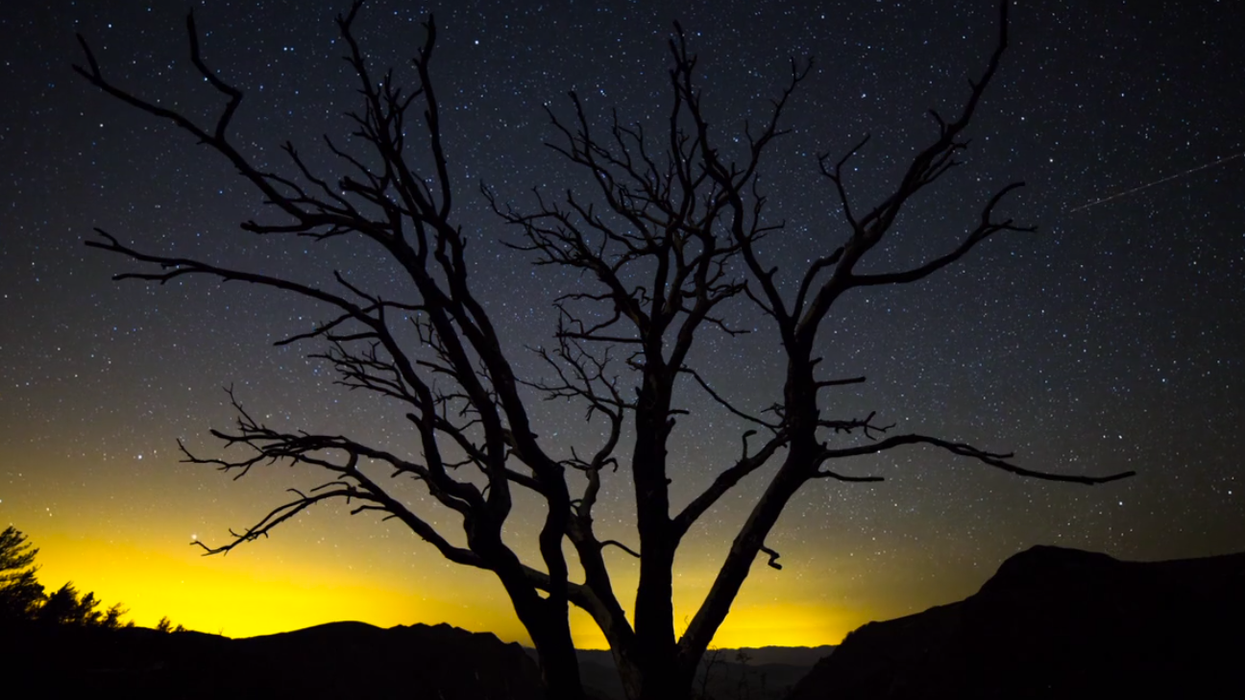'Ride the Sky': A Mind-Blowing Timelapse Video Unlike Any You've Seen Before

Several years ago, motion-control timelapse was an unexplored frontier in the field of video production. Then DSLR video happened, and company after company came out with their own line of automated motion control equipment. Vimeo nearly exploded from all of the gorgeous timelapse videos from folks like Tom Lowe and Preston Kanak. Unfortunately, the internet became over-saturated with these videos, and the age-old technique of timelapse became a cliché by-product of the DSLR revolution. However, there are still filmmakers out there pushing the boundaries of the timelapse medium. Lance Page is one of those filmmakers, and his new video Ride the Sky is unlike any timelapse video you've seen before.
First, here's a brief description of Ride the Sky from its Vimeo page
Ride the Sky takes you on a journey through the forest and on into the Universe.
I had the idea of a new astro time-lapse technique in which the camera is pointed right at the north star and mounted to a motorized pivot point directly lined up with the sensor so the camera is able to spin with the stars through the night. This is where inspiration for the title came from. Sit back, relax and Ride the Sky.
My initial reaction to the unique effect that Page created by syncing his motion-controlled rotation to the movement of the stars was that it must have taken some serious mathematical calculations in order to get the two in sync. However, in a detailed BTS post on his website, Page describes how simple this technique actually was to pull off repeatedly:
I already had an Emotimo TB3 motion control time-lapse head so I figured out a way to mount my DSLR to the head pointing straight up so the pan feature would cause a pivot or roll motion instead of a pan. Then the whole camera rig points directly at Polaris and pivots counter-clockwise a little less than 180 degrees in about 4.5 hours. After trying it out for the first time I was surprised at how well it worked and how loose you can be with the calculations, I felt that a little bit of variation in the speed of the rotation and warpage of the lens added a sense of a human interaction to robotic motion.
Page also walks us through the opening shot of Ride the Sky, a shot that was easily the most complex of the bunch.
The setup for the opening time-lapse sequence of the film was especially complex as I had 2 different controllers doing different things for the same shot. Dynamic Perception’s MX2 was in charge of moving the camera forward on the 12 foot slider and Emotimo’s TB3 ramped up a roll motion about a third of the way into the shot. The controllers were communicating via a split camera signal cable. This was the last shot I got for the film and definitely the most challenging.
To read more about this unique film's production -- including all of the gear and location specifics - head on over to Page's website and check out his Ride the Sky BTS post.
Links:












